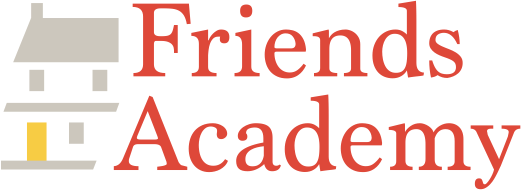Friends Academy Forest Program
Nestled in the heart of our beautiful 65-acre campus lies our extraordinary Forest Program, which opens the door to the natural world and ensures our students understand their impact on the world around them with reflection and integrity – today, tomorrow, and always.
A look inside our Forest Program
The Forest Program at Friends Academy promotes real-world exploration, experimentation, and innovation in the natural environment. Our students use the natural world as a living laboratory – observing, drawing hypotheses, creating, engineering, and testing their theories through hands-on learning that is student-driven.
Our Forest Program Curriculum
From age 3 in Play Group to Fourth Grade, our Forest Program interdisciplinary curriculum empowers students to make cross-curricular connections and build skills in literacy, science, mathematics, and the humanities. Students are empowered to become active stewards of the earth whilst applying foundational knowledge and skills to forward the essential relationship between humans and nature.
Interaction with Nature
At the heart of Forest Schools sessions is the development and maintenance of trust. The adults on site will foster activities and offer feedback to build the confidence of students and build a trusting partnership with students in the outdoor environment. All sessions should begin with low-risk, simple activities and build up to more risky or advanced sessions as the trust between the staff and children strengthens. This may mean that some groups may not experience the same activities as other groups of the same age, depending on their maturity, engagements, and interests, which is in line with the personalized nature of Forest Schools.
Ages 2-3:
Children should typically be curious about the world around them, but require adult mediation to explore or understand, or adult questioning or planning to ensure they get the most positive outcomes.
Ages 3-4
Children should be developing some knowledge of the animals and plants around them, identifying the more common ones by sight and making comments and predictions about where they may be and why.
Ages 4-5:
Children should confidently be able to identify common woodland species and talk about the relationships between them and their habitats.
“Nature and Me”
Enduring Understandings:
- I am connected to nature
- Nature is one of my teachers
- I can help take care of nature
Key Skills:
Students will be able to:
- Collect and collate data through observations, interactions and imaginative play within the forest
- Name and identify key components of the forest
- Observe and identify the needs of the forest
- Compare and contrast the needs of the forest with the needs of people
- Discuss and implement ways that the kindergarten class can help care for the FA forest
“The Natural Neighborhood”
Enduring Understandings:
- The forest is part is part of my neighborhood
- The forest contributes to my neighborhood
- I have a responsibility to help care for the forest
Key Skills:
Students will be able to:
- Interpret and analyze data through observations
- Name and identify the primary plants and animals of our forest
- Discuss and understand “universe of obligation” relative to the FA forest
- Assess, sort, and categorize the benefits of the forest as it relates to the neighborhood at large
- Brainstorm, co-author and implement an action plan to care for the forest
"Long Island's Sanctuary”
Enduring Understandings:
- The forest environment is essential to the health and welfare of Long Island
- Nature and humans are interdependent
- I can contribute to the well-being of the natural world
Key Skills:
Students will be able to:
- Apply data from observations to deepen understanding of the significance of the forest environment
- Discuss and understand how insects, plants, animals, and humans interact within the forest environment
- Brainstorm, draft, implement, review, and revise an action plan to contribute to the well-being of the natural world
- Identify cause and effect of human interactions with the forest environment
"New York's Forest Communities”
Enduring Understandings:
- The forest environment is a complex, interdependent system
- Humans impact the forest environment system
- I can name and recognize the impact of my choices and the choices of others on the natural world
Key Skills:
Students will be able to:
- Define and discuss biodiversity as animals, plants, fungi, and microorganisms as critical elements of the forest environment
- Understand how wildlife coexist and interact (in a delicate balance) in the forest environment in terms of natural resources, habitat, food availability and accessibility, the food chain, and space
- Defend and critique human interactions with the forest environment based on impact
- Develop, co-author, implement and discern a short-term and long-term action plan for ongoing stewardship of the FA forest
"The Economy of the Ecosystem”
Enduring Understandings:
- The forest is both an economic asset and a limited resource
- Humans have a responsibility to serve as stewards of the forest
- I can collaborate with nature to understand and solve problems
Key Skills:
Students will be able to:
- Identify and discuss the benefits and problems (economic and otherwise) that the FA forest and by extension other forest environments, provide and face
- Research and find pathways and solutions to help move the needle on problems in the FA forest and in all forests (i.e. forest degradation, climate change, human overuse, pests and diseases)
- Identify and collaborate to solve a problem in the FA forest (ex. Number of ticks)
- Analyze and apply data from observations and interactions within the forest environment to solve problems humans face in their daily lives (biomimicry)
Proven skills, powerful outcomes
Every day, the Forest Program at Friends Academy deepens Lower School students' critical foundational skills of a rigorous liberal arts curriculum in mathematics, science, and literacy. By regularly engaging in a real-world natural environment that is emergent and ever-changing, students achieve the following outcomes – outcomes that transfer across disciplines and beyond the classroom walls:
-
.jpg?width=4036&height=2691&name=prek_forest-29%20(1).jpg) COMMUNICATION ADEPTNESS
COMMUNICATION ADEPTNESS -

SELF-ADVOCACY
-
.jpg?width=7412&height=5464&name=09292021am17%20(1).jpg) FOCUS AND SELF-REGULATION
FOCUS AND SELF-REGULATION -
 COLLABORATION
COLLABORATION -
-2.jpeg?width=480&height=328&name=IMG_6596%20(1)-2.jpeg) DATA COLLECTION AND ANALYSIS
DATA COLLECTION AND ANALYSIS -
.png?width=2619&height=1466&name=Screenshot%202023-09-11%20at%202.41.17%20PM%20(2).png) PROBLEM SOLVING
PROBLEM SOLVING -
 CONFIDENCE
CONFIDENCE -
.jpg?width=4489&height=3051&name=prek_forest-5%20(1).jpg) ADAPTABILITY AND RESILIENCE
ADAPTABILITY AND RESILIENCE -
 REFLECTION
REFLECTION
Why Learn in a Forest Program?
Current research confirms the more time children spend outdoors, the greater the long-term benefits academically, socially, and emotionally. Through our Quaker commitment to stewardship and sustainability, Friends Academy has always known that nature is not only an extension of the classroom but is an outstanding learning environment – essential for children in educational settings. Check out more resources below to learn more about Forest Programs.
%20(1).jpeg?width=1080&height=566&name=IMG-0442%20(2)%20(1).jpeg)
.jpeg?width=2000&height=1047&name=prek_forest-54%20(1).jpeg)
What Is It and What Are the Benefits?
Xenia Spencer-Milnes dives into the ethos and principles of Forest Programs about who should be guiding the program and the benefits of learning in the natural world.
Dr. Liz O'Brien asked the question, "Do Forest Schools increase young people’s self-confidence and self-esteem?" In her research, she found that Forest Programs increase confidence, communication, and motivation.


